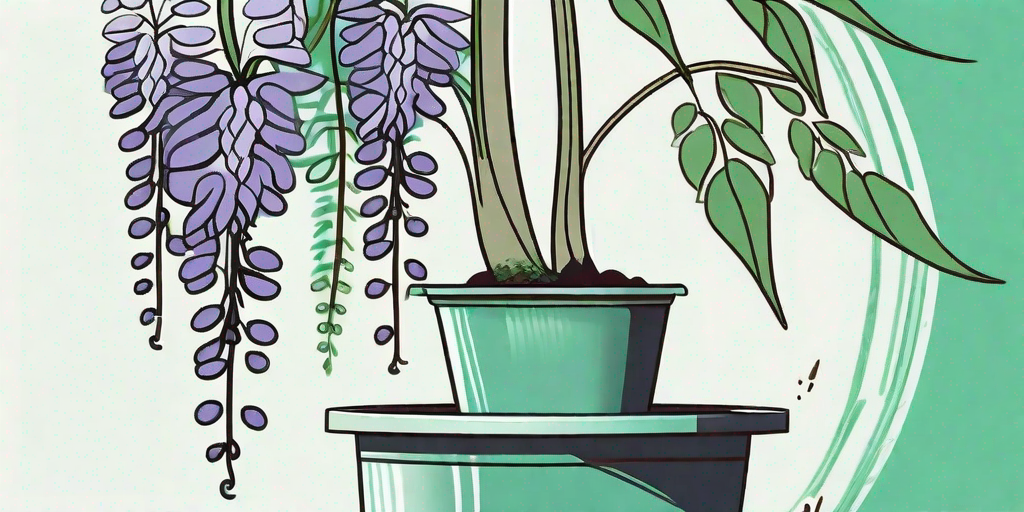
Welcome, budding gardeners and seasoned green thumbs alike! Today, we're diving into the world of wisteria, a plant as notorious for its stunning blooms as it is for its finicky nature. But fear not, with a little patience, a dash of humor, and this guide, you'll be a wisteria whisperer in no time.
Understanding Wisteria
Before we get our hands dirty, let's take a moment to understand our floral friend. Wisteria is a genus of flowering plants in the legume family. They're known for their stunning cascades of fragrant, lavender or white flowers, which can transform any garden into a fairy tale scene.
However, wisteria is not for the faint-hearted. It's a robust and aggressive grower, often reaching up to 30 feet (or more) in height. It's also a bit of a diva, demanding the perfect conditions to bloom. But don't let that deter you. With the right care, your wisteria will reward you with a spectacular display year after year.
Types of Wisteria
There are two main types of wisteria: Asian and American. Asian wisteria, which includes Japanese and Chinese varieties, is known for its vigorous growth and profuse blooms. However, it can be invasive and difficult to control.
American wisteria, on the other hand, is more manageable but blooms less prolifically. It's a better choice for smaller gardens or for those who prefer a less maintenance-intensive plant.
Transplanting Wisteria: A Step-by-Step Guide
Now that we're acquainted with wisteria, let's get to the heart of the matter: transplanting. Whether you're moving an established plant or starting with a new one, here's a step-by-step guide to help you along.
Step 1: Choosing the Right Time
Timing is everything when it comes to transplanting wisteria. The best time is in late winter or early spring, before the plant starts to bud. This gives the wisteria time to establish itself in its new location before it starts to grow.
Step 2: Preparing the New Site
Wisteria is a sun-loving plant, so choose a site with full sun exposure. The soil should be well-draining and rich in organic matter. If your soil is heavy clay or sandy, amend it with compost or well-rotted manure to improve its texture and fertility.
Step 3: Digging Up the Wisteria
Now comes the fun part: digging up the wisteria. Start by pruning back the plant to make it more manageable. Then, using a sharp spade, dig around the root ball, taking care not to damage the roots. Lift the plant carefully and place it on a tarp for easy transport.
Step 4: Planting the Wisteria
At the new site, dig a hole twice as wide and as deep as the root ball. Place the wisteria in the hole, making sure the top of the root ball is level with the soil surface. Backfill the hole, firming the soil gently around the roots. Water thoroughly and mulch around the base of the plant to conserve moisture and suppress weeds.
Post-Transplant Care
After transplanting, your wisteria will need some TLC to help it settle in. Water regularly, especially during dry spells, and feed with a balanced fertilizer in spring. Pruning is also crucial to control growth and encourage blooming. Prune in late winter to remove dead wood and unwanted growth, and again in summer to tidy up the plant and improve air circulation.
Common Problems and Solutions
Despite your best efforts, your wisteria may encounter some problems. Here are a few common ones and how to deal with them:
- Failure to bloom: This is a common complaint among wisteria growers. It can be due to a number of factors, including insufficient sunlight, over-fertilization, or improper pruning. Be patient, ensure your wisteria is getting enough sun, and follow the pruning and feeding guidelines above.
- Invasive growth: Wisteria can quickly take over your garden if not kept in check. Regular pruning is the best way to control its growth. You may also need to install a sturdy trellis or arbor to support the plant and direct its growth.
- Pests and diseases: Wisteria is generally healthy, but it can be affected by pests like aphids and diseases like powdery mildew. Regular inspection, good hygiene, and appropriate treatment can keep these problems at bay.
FAQs
How long does it take for a transplanted wisteria to bloom?
Wisteria can take several years to bloom after transplanting, especially if it's a young plant. Be patient and provide the right care, and your wisteria will eventually reward you with its stunning blooms.
Can I transplant a mature wisteria?
Transplanting a mature wisteria can be challenging due to its extensive root system and heavy weight. However, it's not impossible. The key is to prune the plant back significantly before moving it, and to ensure it receives ample water and care after transplanting.
Can wisteria be grown in pots?
Yes, wisteria can be grown in pots, although it will need regular pruning and feeding to thrive. Choose a large, sturdy pot and a good-quality potting mix. Ensure the pot has adequate drainage to prevent waterlogging.
Conclusion
Transplanting wisteria may seem like a daunting task, but with a little knowledge and a lot of patience, it can be a rewarding endeavor. So roll up your sleeves, grab your gardening gloves, and get ready to transform your garden with the spectacular beauty of wisteria. Happy gardening!















